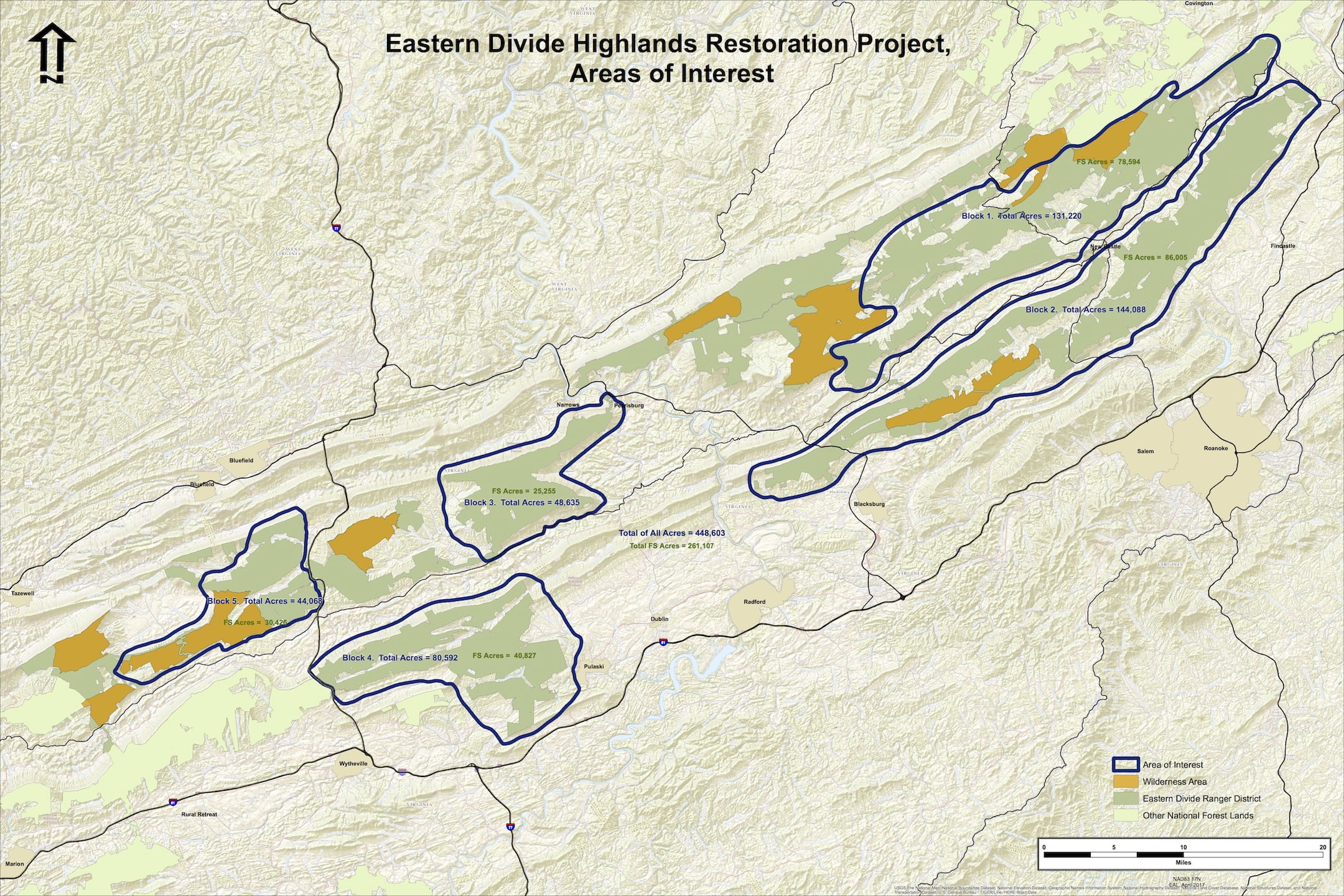
Controlled burns an important part of large landscape national forest project to regenerate declining pine, oak-hickory forest
Those four words conjure up two old songs by that name— a 1975 Marshall Tucker Band ballad and another that was a 1977 Grateful Dead hit.
There’s a book, a movie and just the notion of flames racing up a mountainside from dozens of news accounts about wildfires as well.
Fire on the mountain could also become a mantra of sorts in the U.S. Forest Service’s Eastern Divide Ranger District.
That is, if plans come to fruition to regenerate the southern pine and oak-hickory forests that once dominated the Central Appalachian Mountains the ranger district covers.
That possible regeneration was the topic of two meetings last week— one in Blacksburg and one in Roanoke— where Eastern Divide District Ranger Dan McKeague and his staff of professionals met with the public and stakeholder group representatives to brief them on what’s expected to be a year-long process to formulate an acceptable plan to spur that regeneration.
One of the main components for doing that— for regenerating the traditional kind of forest that covered the mountains in the district— is using prescribed burns. That is, intentionally burning appropriate sections of forest land to kill the invasive species and less desirable trees that do not provide the type of food sources the wildlife found in the mountains of Western Virginia need.
In some places, the fires would also create early successional habitat that’s also important for pollinators and certain species of birds and other wildlife.
Prescribed burns are already a tool the Forest Service uses, but those are generally site specific and for specific purposes.
What McKeague is proposing is a district-wide plan that would also cooperate with state and private landowners in the regeneration process.
McKeague calls it an “Ecological Restoration” across a large landscape.
The second component would be “Community Protection” because some prescribed burns and other possible treatments would be done in areas that are more populated in an effort to diminish the fuels that contribute to out-of-control wildfires.
The two meetings last week were the first step in the planning process for the district. The identified areas where there would be restoration work covers 260,000 acres of national forest land and another 240,000 acres of private and state land.
The district stretches from western Botetourt County and Craig County on the northern end across Montgomery County and 9 other counties to Tazewell on the southern end.
Fire won’t be the only tool used for regeneration and community protection. There could be some timber harvesting to a lesser extent, McKeague said.
“Altered fire regimes in the Central Appalachians have led to a decline of these yellow pine and associated pine-oak open woodland communities,” McKeague wrote in an announcement about the proposal.
“Proposed actions will intend to restore and maintain habitat for both Threatened and Endangered plant and animal species and species of conservation concern including: bobwhite quail, golden-winged warblers, butterfly and bee pollinators, and multiple bat species,” his announcement said.
The proposal also would address the technical “Wildland Urban Interface” (WUI) risks to lessen the impact of wildfire on communities, the notice said.
During the meetings, McKeague said the proposal is concise with its only concerns restoration and community protection. The project is not about recreation or roads, he said.
District Biologist Jesse Overcash said the project has no emphasis on timber management. “Everything we do is habitat related,” he said, with an emphasis on early successional habitat, yellow pine and oak management.
“There’s a whole set of flora and fauna that will benefit from the fire along with wildlife and birds,” he added.
Thirty years ago, there were distinct pine/hardwood bands in the district. That’s no longer the case, Overcast said. The pine beetle has impacted the yellow pine and there’s been no fire to stimulate the oak-hickory regeneration.
Instead, maples, gum, poplar, etc. are invading the forest.
There’s a 10-year workload associated with the project that will also be dependent on funding.
Establishing Community Protection Zones will be the focus of the WUI, and areas in Botetourt, Craig and Montgomery Counties where private land is mixed in with national forest land will be targeted. “There are ‘in-holdings and people everywhere” in those counties, one FS official said.
Fire has historically played an important role in the mountain’s ecosystem, according to the Forest Service personnel, and the hope is the proposed project will help restore that role in a controlled way.
McKeague said last week’s meetings were the first steps in the process of establishing a scoping letter. He expects to hold additional public meetings and tours during the process with a draft document ready in December and a completed project outline by October 2018.
For additional information or to be included in getting updates about the project, contact McKeague at 552-4641.
— Ed McCoy


